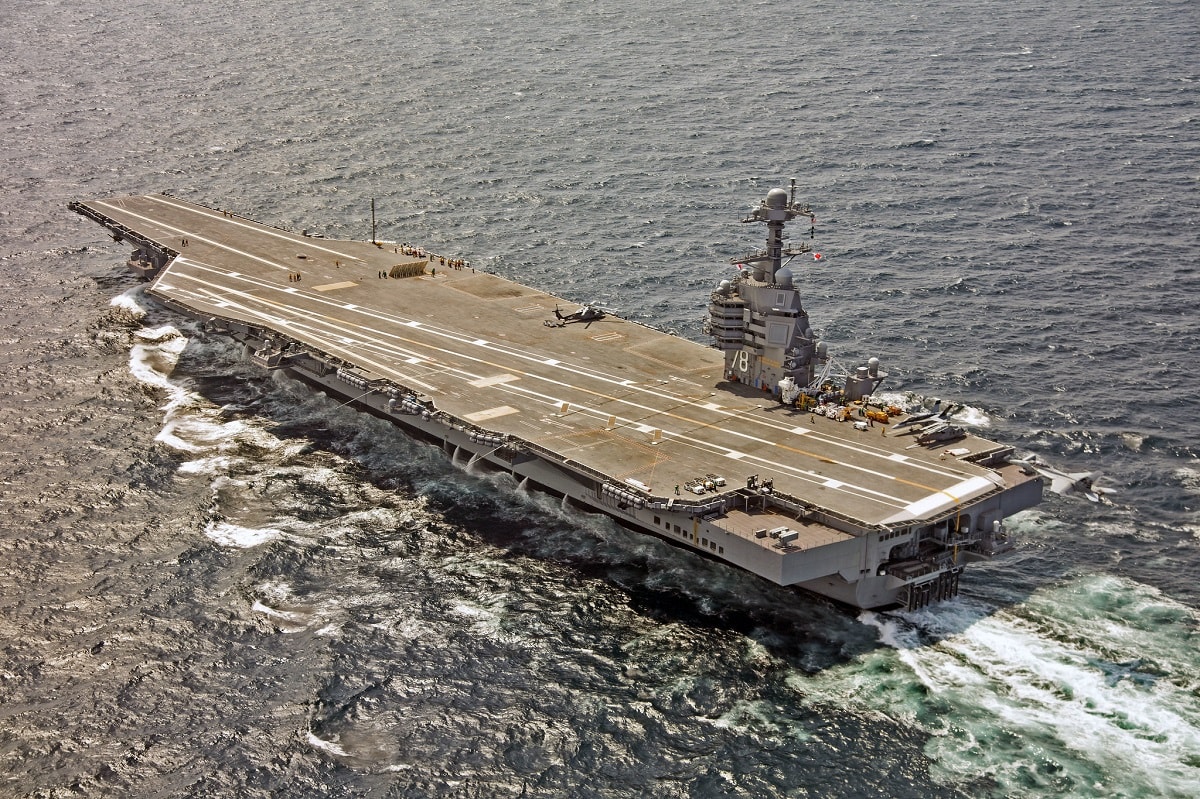The U.S. Navy is the most powerful Navy on the planet today and likely of all time. However, Iran is developing new missile systems to ensure that Washington would need to stay far away from Tehran’s coast in a conflict. And that is why the Ghader missile is so important, according to this expert: The Ghader (“Able”) missile is described by Iranian officials as the most powerful and precise missile in its Navy’s arsenal. The medium-range anti-ship cruise weapon is an upgraded version of the Noor missile and was initially debuted by Iran’s Navy in 2011.
With a range of 200 kilometers, the Ghader was designed to defeat large surface combatants in the Persian Gulf. Last year, Iran launched a comprehensive set of war games encompassing all branches of the Iranian Revolutionary Guard Corps (IRGC).
Testing and Testament to the Ghader Missile
Among the barrage of missiles fired during the exercises was the Ghader. The Commander of the IRGC’s Khatam al-Anbiya Central Headquarters described the intent behind launching the anti-ship cruise missile as a method to “preserve the territorial integrity of dear Iran, as well as the position and power of the region, against the coalition of enemies, and specifically the coalition of the United States and the Zionist regime.” The development of the Ghader missile coincides with Iran’s recent uptick in its missile production.
While Iran claims the Ghader is entirely indigenously-produced, it is based on two of the regime’s older missiles, which are copies of a Chinese prototype. The Ghader is an enhanced version of the Noor and Nasr missiles. Iran’s Noor long-range anti-ship cruise missile is a reverse-engineered variant of the People’s Liberation Army’s C-802 anti-ship missile.
When Iran became China’s first importer of its own anti-ship cruise missile in 1995, the U.S. pressured the People’s Liberation Army (PLA) to halt deliveries to the increasingly hostile country. At this point, Tehran had already acquired 60 C-802s and was able to successfully reverse-engineer the missile. Iran’s Nasr missile is an enhanced variant of China’s C-704 anti-ship missile.
Impressive Range
The Ghader features a range of capabilities that make it the Iranian Navy’s premiere missile including its high-precision navigation system, digital autopilot system, and advanced radar system. The missile uses a solid rocket booster, accelerating the weapon in its initial phase. Once the first phase is complete, the Ghader’s turbojet sustainer propels the missile through its second phase.
According to its military officials, Iran’s improvements on the Ghader missile have proved successful. In its annual wargame exercise in 2021, the Ghader missile reportedly hit its intended target at a distance of more than 200 kilometers. The spokesperson of the military drills stated that “Today’s Iran’s Army cruise missiles have special capabilities, including effective high-explosive warheads and electronic warfare operations.” He added that “With the unveiling of the long-range cruise missile, a giant step will be taken in missile capability of the Army and also defense doctrine of the Islamic Republic of Iran.”
In the last decade or so, Iran’s regime has emphasized the development of its missile arsenal. While Iran’s leadership claims its expanding weapons program serves solely as a deterrent, its actions and rhetoric prove otherwise. The IRGC supplies its proxies across the region with weapons, including missiles and rockets. The Ghader will likely fall into the hands of Iranian-backed militias throughout the Middle East if it has not already.
Maya Carlin is a Middle East Defense Editor with 1945. She is also an analyst with the Center for Security Policy and a former Anna Sobol Levy Fellow at IDC Herzliya in Israel. She has by-lines in many publications, including The National Interest, Jerusalem Post, and Times of Israel.

